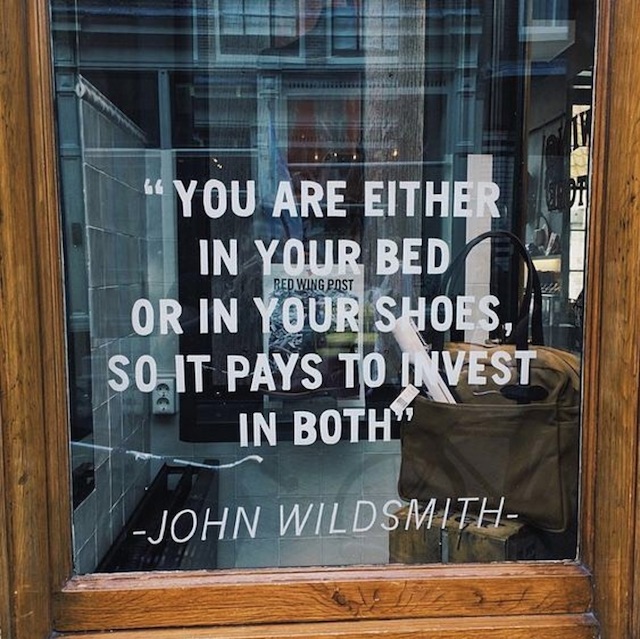
On November 13th, 2017, 15,372 scientists from 184 countries worldwide cosigned an article that acts as a warning to humanity. Oi vey.
The thing is, warnings such as these have been available to us in some capacity for the last couple of decades, with any affirmative government action taking place only now.
As global citizens, it’s time for us to start truly considering the impacts that our daily habits have on the world around us.
Going green is not only a promise to help our environment, but a choice to be an advocate for social justice worldwide. As a 20-something freelance writer, making my life more affordable and green has not only been a choice, but a necessity—especially in the way I choose to move and dress.
Although it may seem like an overwhelming feat, it is up to us to make conscious, greener choices every day to do our part in keeping our world habitable for all life. Here are some easy ways to be of benefit to the world and your wallet.
Waste-Free Food Choices
There are countless ways for an individual to clean-up their grocery habits—and their health—by partaking in waste-free food shopping. These practices can start close to home, even in big-box grocers that you might not associate with zero-waste living. Although the majority of goods that arrive at a store come in cardboard boxes, plenty of fruit, vegetables, and bulk items are available to you unwrapped and unpackaged.
Those seeking to go zero-waste can also start avoiding the grocery store where and when possible. Try doing the majority of your grocery shopping at your local bulk store (where you can usually bring in mason jars and other reusable containers to stock up on things like coffee, tea, spices, and flour). You can also try and hit up a local farmer’s market on a weekly basis to invest in some seasonal, locally-produced products if it’s an option—lucky you!
Low-Cost, Low-Impact Transport
Biking, walking, jogging, even skating around (during my snowy Winnipeg winters, at least) are all eco-friendly, active, and basically free transportation options. We all know how great exercise makes us feel, touting benefits such as energy boosts, better sleep, improved mood, and better sex (oh yeah). So why not get in your 30 minutes on the way to work, to the grocery store, or even during a night out when the conditions are safe to do so?
Environmentally conscious transportation choices are an adventure in and of themselves, offering a meditative escape from your daily stressors, and sometimes some beautiful views of your local area. Some cities, like Montreal and Vancouver, offer daily, weekly, or yearly bike-share membership programs that cost a fraction of what car payments, insurance, and fuel cost for just a month.
For those who might not have the mobile abilities or access to proper active transport infrastructure, public transport and ride-sharing programs are helpful in cutting down on harmful vehicle emissions while getting you where you need to go.
Clothing
Oh, my. Here we are. My favorite way to shop green and save. Our clothing purchases may seem like another materialistic tendency that is normal throughout the first world, but many of us never stop to think about where the countless threads in their local Forever 21 come from.
In the world of fast fashion, most of the largest brands are engaged in a “race to the bottom,” as Josephine Moulds stated in The Guardian, setting up shop in countries with low labor costs and minimal regulations in which to create an absurd amount of chemically-dyed garments. The fast fashion industry is also the second-largest polluting industry in the world, only behind big oil. To advocate for a world with less waste and less pollution, it’s not only important to limit fast-fashion purchases, but eliminate the waste from your wardrobe.
Thrifting is not only a thrill-ride of exploring hidden treasures and making up stories about who owned that incredible jacket before (uh, or is that just me?), but it is one of the most cost-effective and green purchasing practices available. You can find high-quality thrifted and vintage garments from many independent and online retailers, but there is nothing as satisfying as heading to a local thrift shop and testing your luck to finding low-price, well-made items.
In recent years, there has also been a stunning increase in the amount of ethical, slow fashion designers and creators, selling garments that are “made-at-home” by workers paid a fair wage. While these purchases may not always be the cheapest, these items are usually made to last years of regular wear and tear.
However, it’s important to remember that even the most ethically made new garments are still just that—new. Take the time to truly think about your purchases, and pair purchases from well-made, at-home brands with thrifting adventures at your local thrift joint. This helps you do your part to keep clothing out of the landfill while giving back to your community.
All in all, making feel-good, green choices are your best bet in creating healthier, eco-friendly habits throughout your day while spreading your dollars further.
Do you have any other money-saving green tips that I haven’t mentioned above (I skipped some to try and maintain an ounce of brevity)? If so, please share in the comments! I’d love to see what ethical habits you practice day to day.
Author: Carlene Kurdziel
Image: @ecofolks
Editor: Emily Bartran
Copy Editor: Sara Kärpänen
Social Editor: Waylon Lewis








Read 0 comments and reply